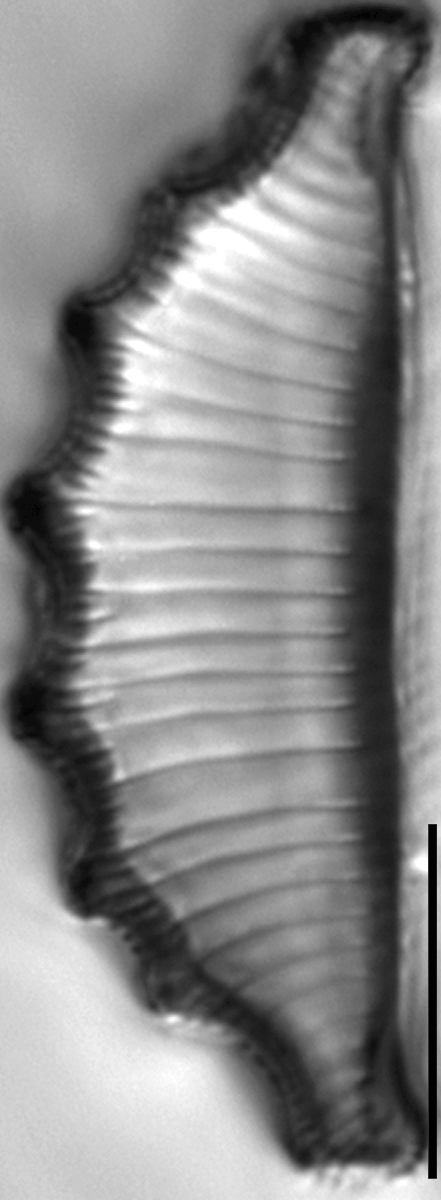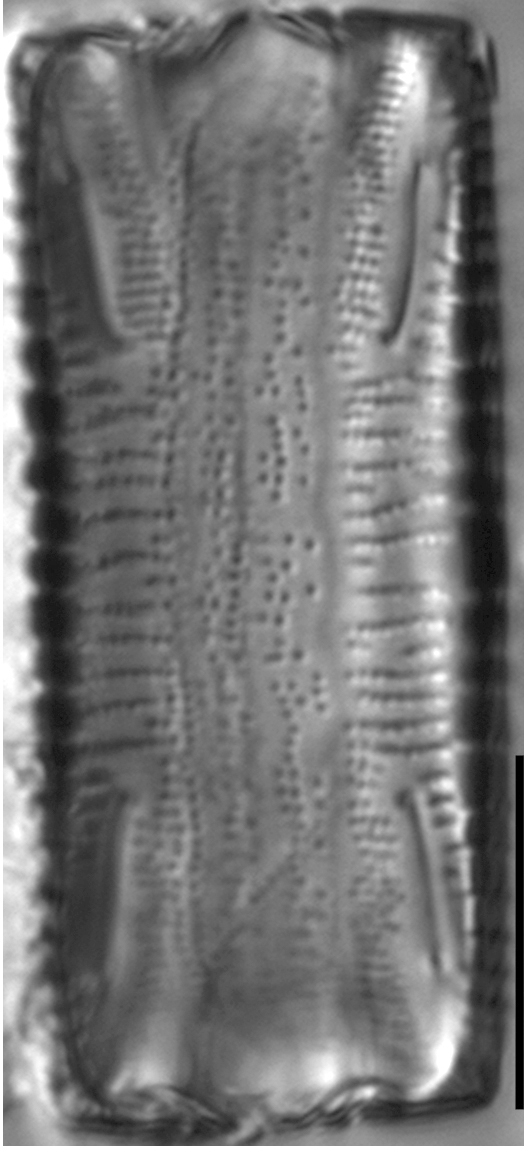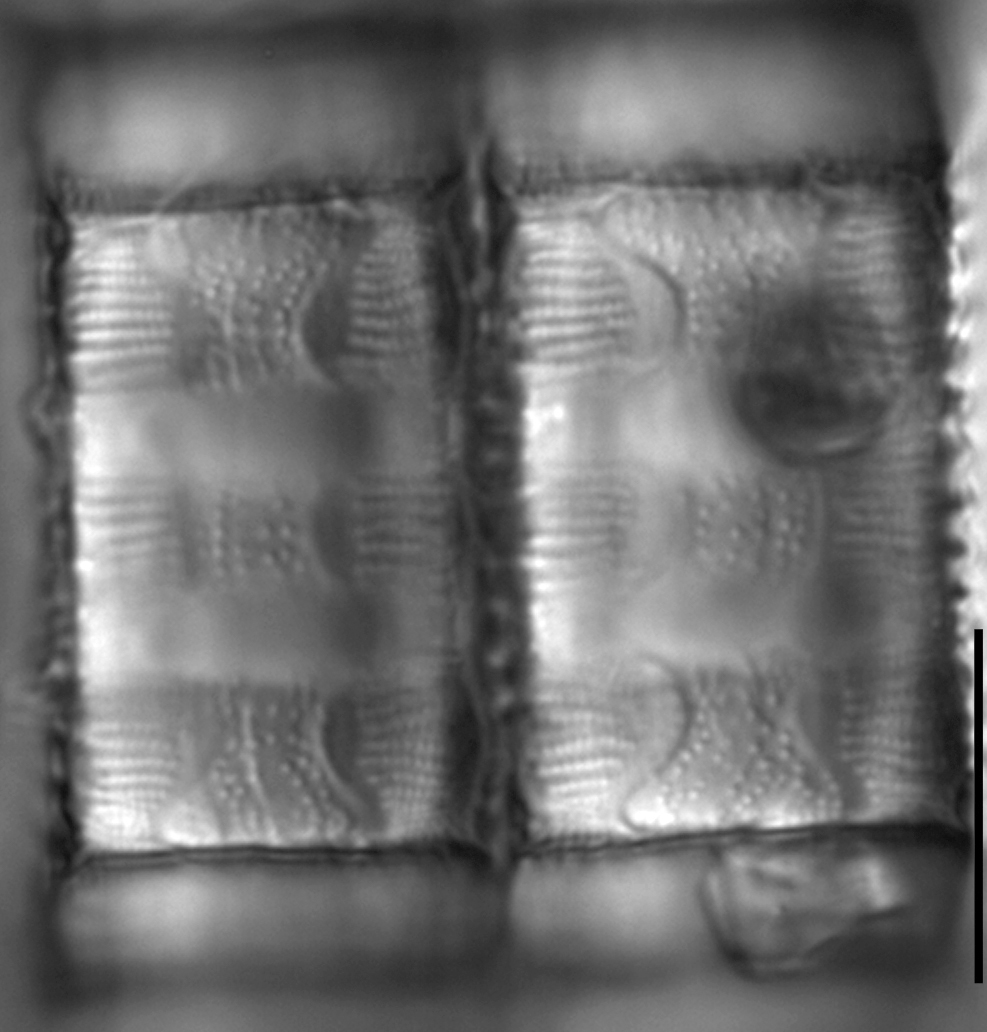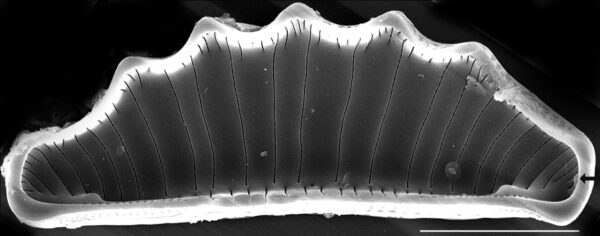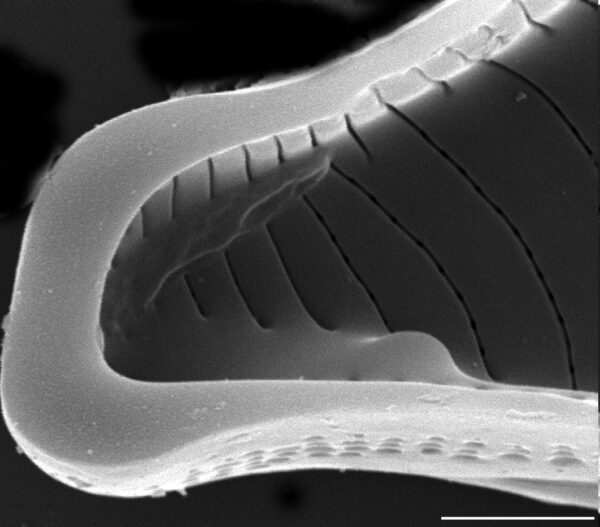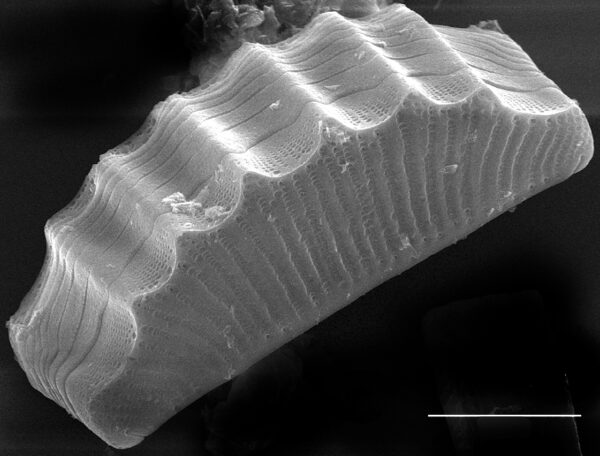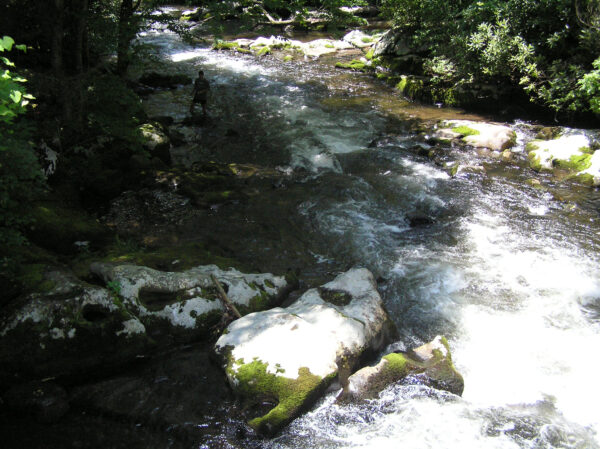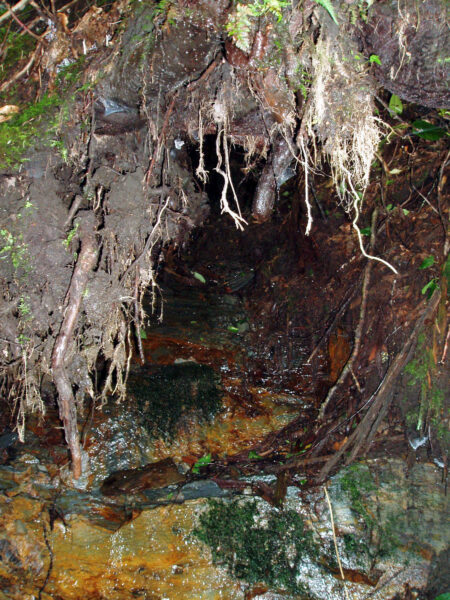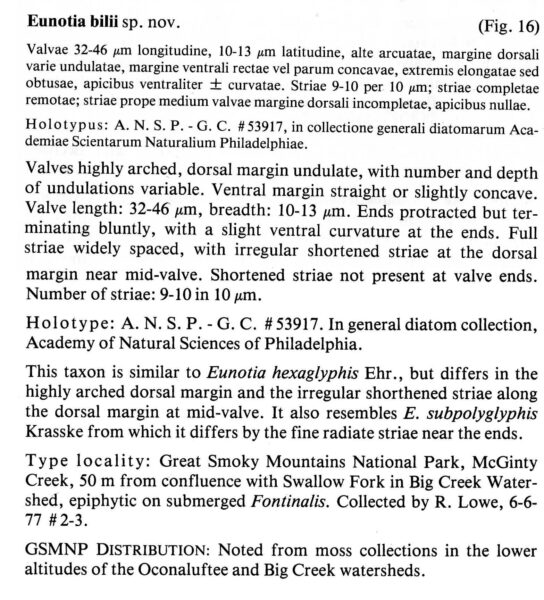Eunotia bilii
-
Category
-
Length Range29-50 µm
-
Width Range10-13 µm
-
Striae in 10 µm7-10 in the center valve, 10-16 at the ends
-
ContributorPaula Furey - Apr 2011
-
ReviewerSam Rushforth - Apr 2011
Identification
Description
Valves are highly arched. The dorsal margin is undulate . The number of dorsal undulations and their depth is variable within the species , but generally ranges from 5 to 8. The ventral margin is straight or slightly concave. The apices are protracted and terminate bluntly, with a slight ventral curvature. Two types of striae are present; full striae are widely spaced and extend from margin to margin, irregular striae are very short and restricted to the dorsal margin near the center valve. Shortened striae are absent from the valve apices. Valves possess one apical rimoportula. Internally, the openings of the areolae are aligned in the bottom of a narrow groove in the inner valve surface (SEM).
Autecology
Eunotia bilii is found epiphytic on bryophytes, in first through fourth order streams and wet walls, especially throughout the Great Smoky Mountains National Park.
-
Size Range, µm3
-
Motility
-
Habitat
-
Waterbody
- Learn more about this
Original Description
Valves highly arched, dorsal margin undulate, with number and depth of undulations variable. Ventral margin straight or slightly concave. Valve length: 32-46 μm, breadth 10-13 μm. Ends protracted but terminating bluntly, with a slight ventral curvature at the ends. Full striae widely spaced, with irregular shortened striae at the dorsal margin near mid-valve. Shortened striae not present at valve ends. Number of striae 9-10 μm.
-
AuthorR.L.Lowe and Kociolek 1984
-
Length Range32-46 µm
-
Width10-13 µm
-
Striae in 10µm9-10
Citations & Links
Citations
Links
-
Index Nominum Algarum
Cite This Page
Furey, P. (2011). Eunotia bilii. In Diatoms of North America. Retrieved April 19, 2024, from https://diatoms.org/species/eunotia_bilii
Responses
The 15 response plots show an environmental variable (x axis) against the relative abundance (y axis) of Eunotia bilii from all the stream reaches where it was present. Note that the relative abundance scale is the same on each plot. Explanation of each environmental variable and units are as follows:
ELEVATION = stream reach elevation (meters)
STRAHLER = distribution plot of the Strahler Stream Order
SLOPE = stream reach gradient (degrees)
W1_HALL = an index that is a measure of streamside (riparian) human activity that ranges from 0 - 10, with a value of 0 indicating of minimal disturbance to a value of 10 indicating severe disturbance.
PHSTVL = pH measured in a sealed syringe sample (pH units)
log_COND = log concentration of specific conductivity (µS/cm)
log_PTL = log concentration of total phosphorus (µg/L)
log_NO3 = log concentration of nitrate (µeq/L)
log_DOC = log concentration of dissolved organic carbon (mg/L)
log_SIO2 = log concentration of silicon (mg/L)
log_NA = log concentration of sodium (µeq/L)
log_HCO3 = log concentration of the bicarbonate ion (µeq/L)
EMBED = percent of the stream substrate that is embedded by sand and fine sediment
log_TURBIDITY = log of turbidity, a measure of cloudiness of water, in nephelometric turbidity units (NTU).
DISTOT = an index of total human disturbance in the watershed that ranges from 1 - 100, with a value of 0 indicating of minimal disturbance to a value of 100 indicating severe disturbance.
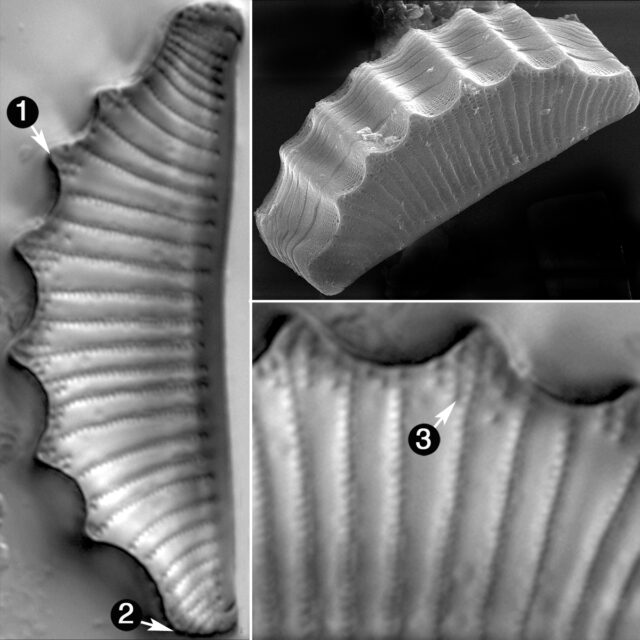
Eunotia bilii
- Dorsal margin undulate
- Apices terminate bluntly
- Striae on dorsal margin short and irregular
The dorsal margin with 5 to 8 undulations. The ventral margin is straight or slightly concave. The ends are protracted but terminate bluntly, with a slight ventral curvature at the ends. Irregular, shortened striae are present on the dorsal margin near the center valve.
 Diatoms of North America
Diatoms of North America


